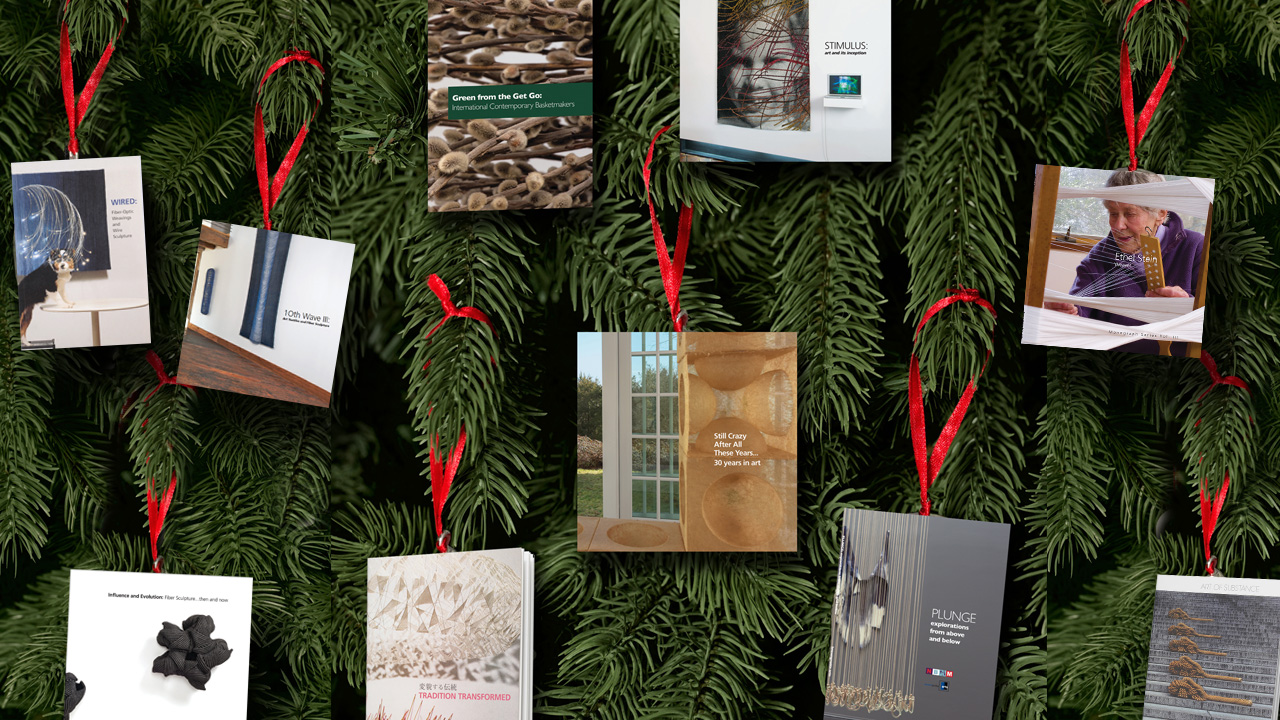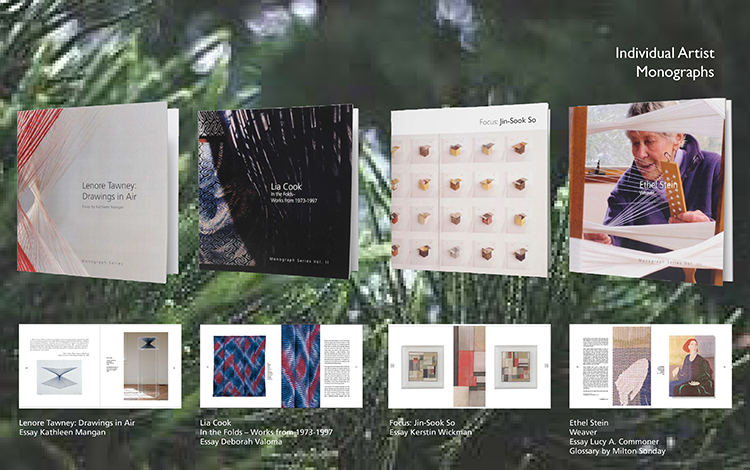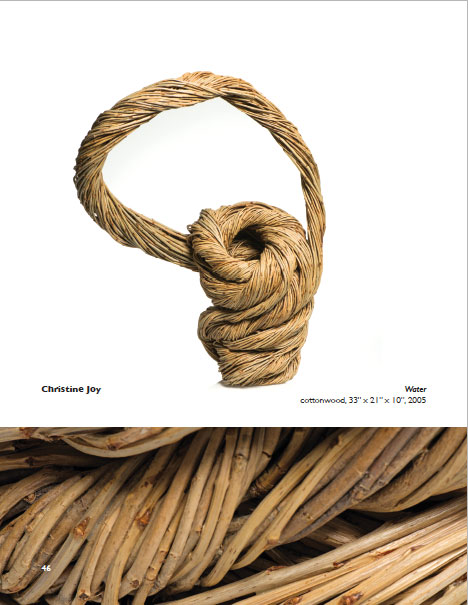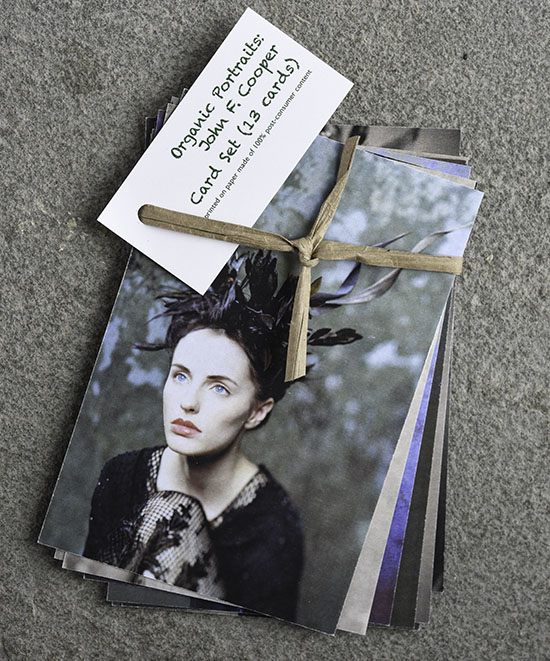



It’s a Spring chock full of interesting exhibitions in the US and abroad. You’ve have just a few days remaining to see Beyond the Trees: Dona Look and Dorothy Gill Barnes http://centerfor
artinwood.org/
exhibition/dorothy-
gill-barnes-dona-
look-beyond-the-
trees/ at the Center for Wood Art in Philadelphia, Pennsylvania. Two browngrotta artist are featured in this exhibition, which closes April 23rd.
Their work can also be seen through June 26th at the Morris Museum in Morristown, New Jersey in Green From the Get Go: Contemporary International Basketmakers, curated by browngrotta arts. In New York, New York, the Experiments in Art & Digital Technologies includes innovative bga artist Lia Cook, http://www.liacook.com/wp-content/uploads/2016/04/EADT-Press.pdf who will lecture in New York on May 5th https://creativetechweek2016.sched.org/event/6DN5/weaving-and-digital-innovation.
Work by Lia Cook is also front and center in a San Francisco, California exhibition, Lines that Tie: Carol Beadle and Lia Cook http://sfmcd.org/press-release-lines-that-tie/ the exhibition is curated by bga artist, Deborah Valoma. Cook will lecture there tomorrow, April 21st. Identify Yourself, in Honolulu, Hawaii http://honolulumuseum.org/art/exhibitions/15320-identify_yourself/, which closes this week, on April 24th, also features work by Lia Cook. Two events in Wilton, Connecticut to attend. Hickory, Ash and Reed: Traditional Baskets, Contemporary Makersat the Wilton Historical Society, http://www.wiltonhistorical.
org/exhibitions.html, Includes several baskets by the late Marian Hildebrandt, whose work is represented by browngrotta arts and whose work is also currently on exhibit in Green from the Get: International Contemporary Basketmakers at the Morris Museum.
Artboom: Celebrating Artists Mide-Century, Mid-Career is open at browngrotta arts for just 10 days, from April 30th-May 8th https://arttextstyle.com/
2016/04/19/art-barn-
2016-artboom-
celebrating-artists-
mid-century-mid-
career-wilton-ct-
april-30th-may-8th/.
In the halls of the Musée cantonal des Beaux-Arts in Lausanne, Switzerland, Nomadic tapestries, an exhibition of some of the extensive contemporary collection of the Toms Pauli Foundation, traces in the evolution of textile art from the 1960s to 2000s,
http://www.musees.vd.ch/en/museem-beaux-arts/exhibition/past-exhibitions/tapisseries-nomades-fondation-toms-pauli-collection-xxe-siecle/. browngrotta arts has work available by twelve of the artists included in this very significant international survey of art textiles — Magadalena Abakanowicz, Lia Cook, Sheila Hicks, Jan Hladik, Ritzi Jacobi, Naomi Kobayashi, Maria Laszkiewicz, Jolanta Owidzka, Mariette Rousseau-Vermette, Wojciech Sadley, Sherri Smith and Hideho Tanaka. The exhibition will be on view through May 29th. In Tilburg, the Netherlands the Textile Museum is hosting a major retrospective of American artist and textile pioneer Sheila Hicks, born 1934 http://www.textielmuseum.nl. Internationally renowned, thanks to her participation in numerous large solo and group exhibitions, this is her first appearance in the Netherlands for many years. The exhibition extends through June 5, 2016.
 We are excited to announce that our 44th catalog, Green from the Get Go: International Contemporary Basketmakers, is now available at browngrotta.com. The catalog, photographed by Tom Grotta, contains 132 full-color photos of artwork from browngrotta arts’ current installation, Green from the Get Go: International Contemporary Basketmakers, on exhibit at the Morris Museum, in Morristown, New Jersey through June 26th. Green from the Get Go showcases more than 75 works by 33 artists from Canada, Europe, Japan, Scandinavia and the US — innovators in the genre of 20th-century art basketry as well as emerging talents. These artists take their inspiration from nature and the history of basketry but their inventive works challenge our conceptions of what a “basket” can be. In Naoko Serino’s Generating 12.2, for example, cylinders of spun jute, of varying degrees of transparency, stand in rhythmic, ethereal balance. The artist hopes that “an expression and dialogue will be produced, that the space would be created/generated in which there is a comfortable energy, expressions that will continue to exist in balance with the surroundings.” In Stéphanie Jacques’s Wall / Mur, we get not one basket, but a honeycomb — nearly a dozen basket spheres made of willow. Jane Balsgard’s Barkbaden boat shape is more literal — a willow frame covered in handmade paper — but the result is unexpected.
We are excited to announce that our 44th catalog, Green from the Get Go: International Contemporary Basketmakers, is now available at browngrotta.com. The catalog, photographed by Tom Grotta, contains 132 full-color photos of artwork from browngrotta arts’ current installation, Green from the Get Go: International Contemporary Basketmakers, on exhibit at the Morris Museum, in Morristown, New Jersey through June 26th. Green from the Get Go showcases more than 75 works by 33 artists from Canada, Europe, Japan, Scandinavia and the US — innovators in the genre of 20th-century art basketry as well as emerging talents. These artists take their inspiration from nature and the history of basketry but their inventive works challenge our conceptions of what a “basket” can be. In Naoko Serino’s Generating 12.2, for example, cylinders of spun jute, of varying degrees of transparency, stand in rhythmic, ethereal balance. The artist hopes that “an expression and dialogue will be produced, that the space would be created/generated in which there is a comfortable energy, expressions that will continue to exist in balance with the surroundings.” In Stéphanie Jacques’s Wall / Mur, we get not one basket, but a honeycomb — nearly a dozen basket spheres made of willow. Jane Balsgard’s Barkbaden boat shape is more literal — a willow frame covered in handmade paper — but the result is unexpected.

The artists in Green from the Get Go, “have a strong connection to the land, whether cultivated fields or wild prairies, marches, or forests,” writes Jane Milosch in her essay, The Entanglement of Nature and Man. “Several cultivate, harvest, and prepare the materials from which they construct their work. They have a respectful awareness of the origin of things, and of the interconnected aspects of nature and ecosystems, which are both fragile and resilient.” In 2011, Milosch, Director, Provenance Research Initiative, Smithsonian Institution and former curator, Renwick Gallery, Smithsonian Museum of American Art, approached browngrotta arts about mounting an exhibition featuring artists working in basket forms. Discussions quickly coalesced around designing an exhibition that would highlight these artists’ processes and techniques and shed light on their intimate connection to nature. Green from the Get Go: International Contemporary Basketmakers, the exhibition and catalog, featuring dozens of baskets, vessels and related objects of natural materials — bark, twigs, willow, cedar and bamboo, was the result.
The work in Green from the Get Go reveals a heightened sensitivity to the physicality of materials, one that honors the stewardship of nature by the artists’ choice and use of materials. That practice is under challenge, however. For Dona Look, collecting and preparation of the birch bark for her work is weather dependent and labor intensive. That process has grown more difficult as white birch trees, once prevalent in northern Wisconsin, have become harder to find due to climate change. Christine Joy has begun collecting a great amount of red mountain maple, as her neighbors in Montana remove it to protect their homes from forest fires. Mountain maple in it’s first year of growth is a beautiful burgundy and not too branchy, she says, but she did not use it until it was seen as a fire hazard. “The environmental factor of fire affected my material choices,” says the artist.
 “These baskets feel complete, and at the same moment they invite human interaction and interpretation,” writes Milosch. Explore them in the catalog (www.browngrotta.com/Pages/c40.php.) and at the Morris Museum in Morristown, New Jersey from now until June 26th; www.morrismuseum.org/current-exhibitions/.
“These baskets feel complete, and at the same moment they invite human interaction and interpretation,” writes Milosch. Explore them in the catalog (www.browngrotta.com/Pages/c40.php.) and at the Morris Museum in Morristown, New Jersey from now until June 26th; www.morrismuseum.org/current-exhibitions/.
From March 19th to June 26th, the Morris Museum in Morristown, New Jersey will exhibit Organic Portraits: John F. Cooper in conjunction with Green from the Get Go: International Contemporary Basketmakers. Photographer John F. Cooper’s Organic Portraits series and his book of the same name are the result of a creative project that has has been part of his life for well over a decade. “From the beginning,” Cooper explains, “the intent of the Organic Portraits project was to create a series of timeless and fundamentally beautiful images that would create awareness for—and help preserve—the world’s rainforests. In the 1950s, around the time I was born, about 15 percent of Earth’s landmass was covered with oxygen-generating and carbon-dioxide storing rainforests. As of the time of this book’s publication, fewer than 70 percent of those forests remain; more of these crucial ecosystems could disappear by the close of this decade. It is my belief they benefit the world more by being present rather than existing only in photographs, videos and the annals of history. The aim of this project is to drive home the understanding that our rainforests— the lungs of our Earth— are both vital and in dire need of protection.” Cooper published Organic Portraits through a Kickstarter campaign; Cooper is donating all profits from the book, which is available in the Museum’s bookstore, to the Rainforest Action Network Fund.
The photographs in Organic Portraits feature models posed against classic and simple backdrops and incorporating natural elements into each model’s hair to create a unique hair sculpture. Most of the photographs produced for Organic Portraits utilized large-format Polaroid film. Polaroid is now extinct; it’s eerily prophetic that the very medium used to create a series of images intended to preserve the world’s rainforests is now, itself, no longer. The cameras used in the series –each a work of art in their own right –were a 1950 8×10 Deardorff View Camera, and a 1980 4×5 Deardorff View Camera. Handcrafted from mahogany and brass, they are beautiful pieces of functional sculpture that were designed to last. The cameras are no longer manufactured and only a handful survive in the world today.

A set of 13 John F. Cooper Postcards printed on paper made of 100% post-consumer content and is available at the Museum’s store
In creating these works, Cooper received generous support from 100 models, fashion designers, backdrop painters and studios, Peter D. Brown, who fabricated the organic hair sculptures and environmental advocates Summer Rayne Oakes and Nicolas Rachline. “The images we have created are as beautiful as they were when they were first born in our imaginations,” says Cooper. “The cause that they support—saving our rainforests and the indigenous people who call them home—is as vital, no, more so, than when the project first began.”
The Opening Reception for Organic Portraits and Green from the Get Go: International Contemporary Basketmakers will take place on March 31st from 6:30 to 8:30 pm. John F. Cooper will speak about his photographs at Tea and Treasures on Wednesday, May 18, 2016. The Morris Museum is located at: 6 Normandy Heights Road, Morristown, NJ 07960, accessible from New York City via www.njtransit.com. For more information: (973) 971-3700; info@morrismuseum.org or http://www.johnfcooper.com.
Another year of interesting and inspirational book recommendations from browngrotta arts’ artists and staff. History, humor, poetry, philosophy — it’s all here.
Dona Anderson reports, “I recently read Listening to Stone: The Art & Life of Isamu Noguchi by Hayden Herrera. Noguchi created Black Sun, a sculpture in Seattle’s Volunteer Park. Postwar, Noguchi was increasingly involved in designing public spaces — the UNESCO garden in Paris, Yale University’s Beinecke Library Garden, the Billy Rose Sculpture Garden in Jerusalem — while still creating personal work. His aim, he said was to form ‘order out of chaos, a myth out of the world, a sense of belonging out of loneliness.’
My current read is Building Art: The Life & Work of Frank Gehry by Paul Goldberger.” Chris Drury loved John McPhee’s Coming into the Country – although, he notes, it is an older book now – about Alaska. Ceca Georgieva read A Thousand Splendid Suns by Khaled Hosseini and is currently reading, The Secret Book of Frida Kahlo: A Novel by F.G. Haghenbeck.
Helena Hernmarck recommends, Don’t Despair by Matias Dalsgaard (www.pinetribe.com; Twitter:@MatiasDalsgaard). Dalsgaard is a Danish scholar who has a background in comparative literature and postdoctoral degree in philosophy. The book offers a Lutheran-Kirkegaardian perspective on life, criticizing the modern perspective of being self-centered and ultimately despaired.

When I first held this book in the 1980s it offered a thoughtful contextualization to the real life process of gathering and recycling urban materials for my sculptures and installations. With contemporary concerns of upcycling and sustainability, Jencks’ and Silvers’ assertions seem more apt than ever.” Nancy Koenigsberg recommends a favorite from 2014,
 Fiber Sculpture: 1960-Present by Jenelle Porter. Mary Merkel-Hess says her favorite book on art this year was
Fiber Sculpture: 1960-Present by Jenelle Porter. Mary Merkel-Hess says her favorite book on art this year was Playing to the Gallery by Grayson Perry, a British ceramic artist, described by one reviewer as “a man in a frock who makes pots with rude designs.” Mary describes it as “a quirky, personal and lively journey through the issues facing the contemporary art world and a lot of it is hilarious – especially the illustrations.”
Heidrun Schimmel read, “with great pleasure,” The Blazing World by Siri Hustvedt (Simon and Shuster, New York 2014). “And not always with great pleasure,” Heidrun says she read,
All the World’s Futures: 56 International Art Exhibition, the catalogues for this year’s Venice Bienniale. “Most of the essays are very interesting and important,” she writes. “There were some very good pavilions in the Giardini this year, for example the Japanese Pavillon for the textile art scene.” Hisako Sekijima recommends a book in Japanese,
 U.S. Cultural Diplomacy and Japan in the Cold War Era (only the title is in English; the contents are in Japanese. It’s a 300-page hardcover book published by University of Tokyo Press, 2015) It is an extensive study done by Fumiko Fujita, ex-professor at Tsuda College. “Actually, the author is my college friend,” writes Hisako. Reading this book, she “happily” realized that she had been exposed to much of this cultural climate after the World War, as she grew up. “From home comedies, like Lassie to Edward Steichen’s The Family of Man, I learned — and was surprised — at the large extent to which numberless cultural programs had been politically planned to create a good partnership between US and Japan.” She was also surprised to learn such programs had been also worked to be less political or more culturally meaningful by the efforts done by enthusiastic and respectful private people like cultural attachés, artists or sports players. “I liked this latter part of the story! Though planned politically, such rich programs proved to influence us so much. I studied English and could enjoy my chance to live in NYC, where I came across with new waves in crafts.” Kay Sekimachi recommends Masters of Craft: Portraits by Paul Smith (and so do Tom and Rhonda) and also The Monocle Guide to Cozy Homes, edited by Tom Morris, Monocle (Gestalten, Berlin. 2015). Last Spring, Wendy Wahl began teaching, Soft Materials, a course in the department of Constructed Environments at Parson’s New School in New York. “In researching books for the course,” she writes, “I was reintroduced to Fabrics: A Guide for Interior Designers and Architects, by Mary Paul Yates (W.W.Norton). Imagine my delight to see the inclusion of Fiber Art and the images from browngrotta arts. At a rare and used bookstore I came upon
U.S. Cultural Diplomacy and Japan in the Cold War Era (only the title is in English; the contents are in Japanese. It’s a 300-page hardcover book published by University of Tokyo Press, 2015) It is an extensive study done by Fumiko Fujita, ex-professor at Tsuda College. “Actually, the author is my college friend,” writes Hisako. Reading this book, she “happily” realized that she had been exposed to much of this cultural climate after the World War, as she grew up. “From home comedies, like Lassie to Edward Steichen’s The Family of Man, I learned — and was surprised — at the large extent to which numberless cultural programs had been politically planned to create a good partnership between US and Japan.” She was also surprised to learn such programs had been also worked to be less political or more culturally meaningful by the efforts done by enthusiastic and respectful private people like cultural attachés, artists or sports players. “I liked this latter part of the story! Though planned politically, such rich programs proved to influence us so much. I studied English and could enjoy my chance to live in NYC, where I came across with new waves in crafts.” Kay Sekimachi recommends Masters of Craft: Portraits by Paul Smith (and so do Tom and Rhonda) and also The Monocle Guide to Cozy Homes, edited by Tom Morris, Monocle (Gestalten, Berlin. 2015). Last Spring, Wendy Wahl began teaching, Soft Materials, a course in the department of Constructed Environments at Parson’s New School in New York. “In researching books for the course,” she writes, “I was reintroduced to Fabrics: A Guide for Interior Designers and Architects, by Mary Paul Yates (W.W.Norton). Imagine my delight to see the inclusion of Fiber Art and the images from browngrotta arts. At a rare and used bookstore I came upon The Root of Wild Madder: Chasing the History, Mystery and Lore of the Persian Carpet by Brian Murphy (Simon and Schuster). The author takes the reader on a magic carpet ride traveling in the regions of its origins and destinations to tell the stories of the dyers, weavers and sellers of this remarkable art form. At my local public library I found

Randy Walker writes, “At the risk of appearing immodest, I’m recommending a book of poetry, The Genome Rhapsodies, that has one of my pieces on the cover. And I’m not even an avid poetry reader. When I was approached by Anna George Meek, a friend and accomplished poet, about using an image of my first public art installation, Woven Corncrib, on the cover of her new collection of poems, I was, of course, honored. But that’s not why I’m recommending this book. As we worked together to find an appropriate image, a series of conversations ensued over several months. These conversations were about histories, found objects, genetic material, fibers of all kinds woven throughout our lives. Gradually, I began to see clearly why Anna would venture to adorn her book, winner of the Richard Snyder Publication Prize and a product of over 15 years of work, with an image of an old steel corn crib woven with 300 pounds of salvaged fiber. Reading these poems, some deeply personal, opened an expansive view to me of a world that, as a primarily visual person, I don’t usually glimpse.” Tom and Rhonda recommend Organic Portraits, a photography book by John Cooper. Cooper’s organic portraits will be on exhibit this Spring at the Morris Museum in New Jersey in conjunction with Green from the Get Go: International Contemporary Basketmakers, from March 19 to June 26, 2015. “From the beginning,” Cooper explains, “the intent of the Organic Portraits project was to create a series of timeless and fundamentally beautiful images that would create awareness for—and help preserve—the world’s rainforests. In the 1950s, around the time I was born, about 15 percent of Earth’s landmass was covered with oxygen-generating and carbon-dioxide storing rainforests. At the time of this book’s publication, fewer than 70% of those forests remain. The aim of this project is to drive home the understanding that our rainforests— the lungs of our Earth— are both vital and in dire need of protection.” Cooper published Organic Portraits through a Kickstarter campaign; he is donating all profits from the book to the Rainforest Action Network Fund.
We hope your holidays provide you lots of leisure reading time!
through January 20, 2013
High Fiber: Recent Large Scale Acquisitions in Fiber
Racine Art Museum
Racine, Wisconsin
High Fiber transforms RAM’s largest gallery space with larger-than-life size sculpture by significant contemporary artists who have established reputations working with fibers such as fabric, metal wire, and cedar. Created with techniques like weaving and knotting––and touching on a variety of subjects including metaphysics, the human condition, and the natural world––the works featured in this exhibition delight the eye and engage the mind. The artists whose work is included are: Nancy Hemenway Barton, Carol Eckert, Françoise Grossen, Jan Hopkins, Michael James, Ruth Lee Kao, Nancy Koenigsberg, Gyöngy Laky, Rebecca Medel, Linda Kelly Osborne, Barbara Lee Smith, Jean Stamsta, Merle Temkin, Dawn Walden and Claire Zeisler. For more information, call: 262.638.8300 or visit: http://www.ramart.org/sites/default/files/userfiles/exhibitions/2012/HighFiber/High Fiber Notes.pdf.
opened January 12th
Green from the Get Go: International Contemporary Basketmakers
Edsel & Eleanor Ford House, Visitor Center GalleryGrosse Pointe, Michigan

Green from the Get Go: Contemporary International Basketmakers installation at the Edsel & Eleanor Ford House, photo by tom grotta
Green from the Get Go: International Contemporary Basketmakers, curated by browngrotta arts and Jane Milosch, former curator of the Renwick Gallery, Smithsonian American Art Museum, opens at the Visitor Center Gallery of the Edsel & Eleanor Ford House in Grosse Pointe, Michigan and runs through March 9th. The Edsel & Eleanor Ford House is at 110 Lake Shore Road, Grosse Pointe, Michigan, 48236. Hours are 11 a.m to 5 p.m. Tuesday through Sunday. For more information call: 313.884.4222 or visit: http://www.fordhouse.org/calendar.html?month=&year=&cat=&cid=8691.
opened January 12th
Aleksandra (Sasha) Stoyanov: Warp and Weft Painting
Tefen Open Museum
P.O.B. 1
Migdal Tefen, Israel 24959
Art Gallery: 04-9109613; Visitors Department: 04-9872022; 04-9109609
The Tefen Open Museum exhibition features a large grouping of Stoyanov’s painterly weavings, whose subjects feel like dream fragments or half-forgotten memories. There is a catalog for the exhibition, which is open through August 2013, http://store.browngrotta.com/aleksandra-sasha-stoyanov-warp-and-weft-painting/. It features an essay by Davira Taragin and will be available through browngrotta arts. Stoyanov’s work, From the First Person – Number II, has recently been added to the permanent collection of the Metropolitan Museum in New York.
opening January 17th
Lenore Tawney: Wholly Unlooked For
University of the Arts
Rosenwald-Wolf Gallery
Philadelphia, Pennsylvania
The University of the Arts presents an exhibition by late artist Lenore Tawney (1907–2007), a leading figure in the contemporary fiber arts movement. Presented in conjunction with the Lenore G. Tawney Foundation, the exhibition, which runs through March 2nd, will feature her paper-focused pieces. For more information, visit: http://www.uarts.edu/.The Maryland Institute College of Art, Tawney’s alma mater, is hosting a complementary exhibition, http://www.mica.edu/News/Multi-Venue_Exhibition_Honors_Legendary_Fiber_Artist_Lenore_Tawney_H92_(1907–2007)_This_Winter_.html under the same, title featuring her line-based objects.
Opening Reception: January 24, 5 – 7:30 p.m.
University of the Arts
Rosenwald-Wolf Gallery
Philadelphia, Pennsylvania
Panel Discussion: January 24, 2 – 4 p.m.
The Legacy of Lenore Tawney
University of the Arts
CBS Auditorium, Hamilton Hall
Panelists: Jack Lenor Larsen: dean of Modern Textile Design, founder of LongHouse, Honory Doctorate, University of the Arts; Kathleen Nugent Mangan: director of the Lenore G. Tawney Foundation; Dr. Suzanne Hudson: assistant professor, University of Southern California; Warren Seelig: artist, distinguished visiting professor, University of the Arts; Moderator: Sid Sachs: director of exhibitions, University of the Arts.
opening January 22nd
MFA Book Arts and Crafts/Fibers Exhibition
Gallery 224 & President’s Office
University of the Arts
Philadelphia, Pennsylvania
This exhibit features work by University of the Arts students in the MFA in Book Arts/Printmaking and Crafts/Fibers programs, who have each created a piece in response to Lenore Tawney’s work. The students researched an extraordinary collection of objects from the Lenore Tawney Foundation, including old books and parts of old books, wood containers, small bottles and thread, which they incorporated and used as inspiration for their exhibition pieces. The exhibition runs through February 8th. For more information, visit: http://www.uarts.edu/.
Copyright © 2014-2025 arttextstyle | Powered by WordPress | Design by Iceable Themes
